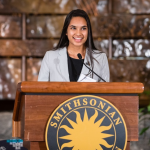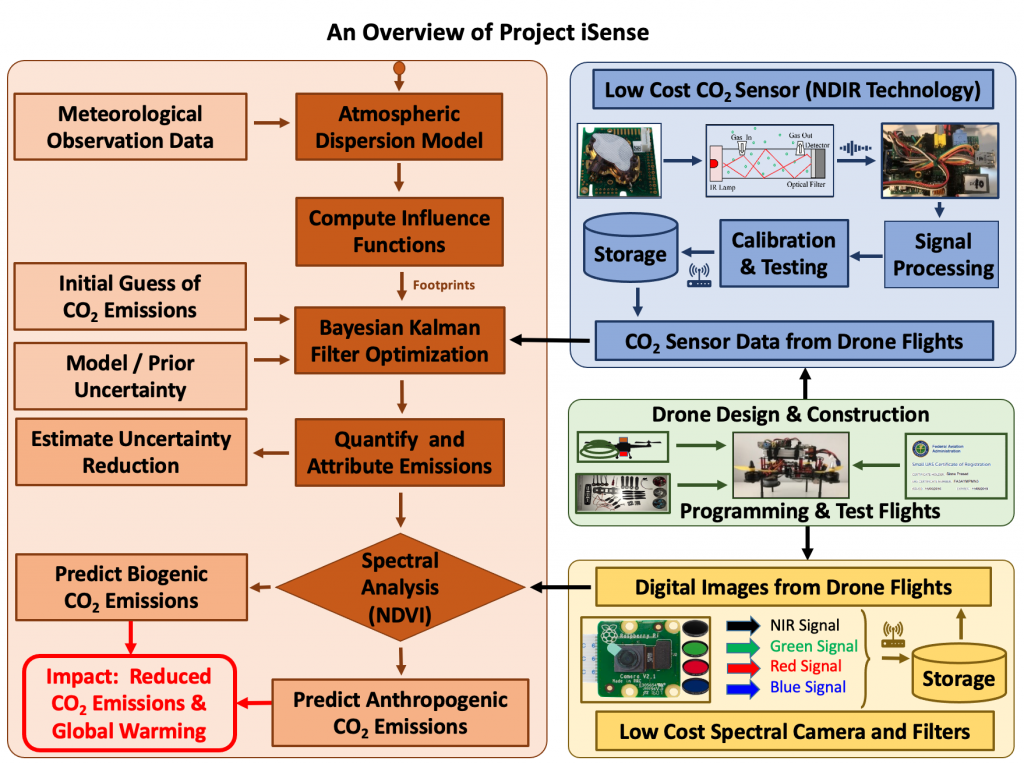Technology Innovation for Climate Change and Public Health

By Siona Prasad
Project iSense: Fighting climate change, one city at a time

I. Motivation
There is overwhelming scientific consensus that the earth is heating up. Shrinking ice sheets and declining arctic glaciers reflect a 17-centimeter rise in sea levels. Extreme events are seeing record high temperatures. Ocean acidification has been spurred by the additional 2 billion tons of carbon dioxide absorbed by its uppermost layer every year. A 2 degree Celsius increase in global temperatures since pre-industrial levels is predicted to destroy the stable climate and environment humans have adapted to over the past 12,000 years – and with the planet hitting the 1.5-degree mark, we are already 3/4ths of our way there. Scientists say that we have less than a decade to save our planet from climate change.
Protocols and treaties have emerged from this global crisis, frantically urging immediate reductions in greenhouse gas emissions. The Kyoto Accord set mandatory limits on emissions from industrialized nations. The Paris agreement represented the set of ambitious targets detailed in national climate action plans to make dramatic and rapid reductions in global temperature. However, despite the many government-set plans and limits, there remains no way to quantify their impact. It’s as if we are trying to diet without weighing ourselves. Without a way to measure emissions, these mitigation strategies can never be properly implemented and enforced. It is shocking that the biggest global crises we face today lack even the first step to a solution: a cost-effective way to continuously monitor and measure greenhouse gas emissions from large industrial areas.
II. Project iSense
Project iSense is an initiative to measure the city-wide CO2 emissions responsible for climate change. Over the past couple of years, I designed and built nine low-cost carbon dioxide sensors and deployed them on cell towers and drones around my hometown of Washington DC. I developed an inversion model that combined measurements with wind data to predict an emission inventory for a city. Using a combination of sensor technology, drone platforms, and inversion modeling, Project iSense aims to pinpoint and quantify hotspots of greenhouse gas emissions in large cities.
III. Impact
The significance of my research lies both in its interdisciplinary nature and tremendous societal impact.
- The CO2 sensor is 250 fold cheaper than current technology on the market. This allows for large-scale deployment in mega-cities.
- Drones have never been used before as a platform for greenhouse gas measurements. They serve as both a mobile and stable platform, maximizing the efficiency of the system. Further, they allow for measurements in areas that would otherwise be difficult to access.
- Sensor technology, drone platforms, and mathematical transport modeling have never before been combined in a greenhouse gas measurement system. I’ve implemented my system around Washington DC, and successfully predicted an emission inventory for the city, demonstrating the potential of this work to form the basis for a worldwide greenhouse gas measurement system.
In addition, the results of this research are extremely significant.
- The CO2 sensor has an accuracy of over 99 percent and captured the daily and seasonal patterns
- The multispectral imaging system successfully distinguished between biogenic and anthropogenic sources
- Drone construction, calibration, and programming culminated in a successful and stable flight.
- The plume dispersion model and inversion tools were able to predict emission inventories for Washington DC and highlighted a large CO2 contribution from the transportation sector.
- The emission inventory was used to predict the total emissions of other trace gas species like methane. In addition, data collection over multiple years allowed for the analysis of multi-year trends in CO2 emissions.
The IPCC’s most recent report warns that climate change will be irreversible if greenhouse gas emissions are not reduced by 2030. That’s ten years away. The results of our actions today will affect the majority of our generation’s lifetime and the entirety of our children’s. And the consequences are global and catastrophic.
The first step to reducing greenhouse gas emissions is being able to measure them. In this project, I demonstrate a methodology to successfully measure and monitor carbon dioxide emissions from large cities. By pinpointing and quantifying sources of CO2, we take the first step to enforcing mitigation strategies and government-set limits on greenhouse gas emissions.
In the future, I want to scale this measurement system to other big cities around the world. I am working to implement my carbon dioxide sensor networks in cities such as New York and LA – major CO2 emitters nationwide. Further, I hope to work with companies such as the EPA and NOAA in order to use my emissions inventories to better inform environmental policy. The results of this research should be used to directly influence public policy, and help enforce environmental regulations.
We have a decade to solve the biggest environmental crisis that has ever plagued our Earth. A comprehensive system to measure and ultimately reduce greenhouse gas emissions doesn’t currently exist. Through this project, we take the first step toward reducing emissions and saving our only habitable planet from climate change.
Like what you read?
More from Siona Prasad here.
References
National Research Council. (2010). Verifying greenhouse gas emissions: methods to support international climate agreements. National Academies Press.
Staudt, A., Huddleston, N., & Kraucunas, I. (2008). Understanding and Responding to Climate Change: Highlights of National Academies Reports.
Pachauri, R. K., Allen, M. R., Barros, V. R., Broome, J., Cramer, W., Christ, R., … & Dubash, N. K. (2014). Climate change 2014: synthesis report. Contribution of Working Groups I, II and III to the fth assessment report of the Intergovernmental Panel on Climate Change (p. 151). IPCC.
Ramaswamy, V., Schwarzkopf, M. D., Randel, W. J., Santer, B. D., Soden, B. J., & Stenchikov, G. L. (2006). Anthropogenic and natural influences in the evolution of lower stratospheric cooling. Science, 311 (5764), 1138-1141.
Field, C. B., Barros, V., Stocker, T. F., & Dahe, Q. (Eds.). (2012). Managing the risks of extreme events and disasters to advance climate change adaptation: special report of the intergovernmental panel on climate change. Cambridge University Press.
Ramanathan, V. (1988). The greenhouse theory of climate change: a test by an inadvertent global experiment. Science, 240 (4850), 293-299.
Melillo, J. M. (2014). Climate change impacts in the United States, highlights: US national climate assessment. Government Printing Oce.
Tollefson, J. (2012). Megacities move to track emissions. Nature, 492 (7427), 20.
Nisbet, E., & Weiss, R. (2010). Top-down versus bottom-up. Science, 328 (5983), 1241-1243.

